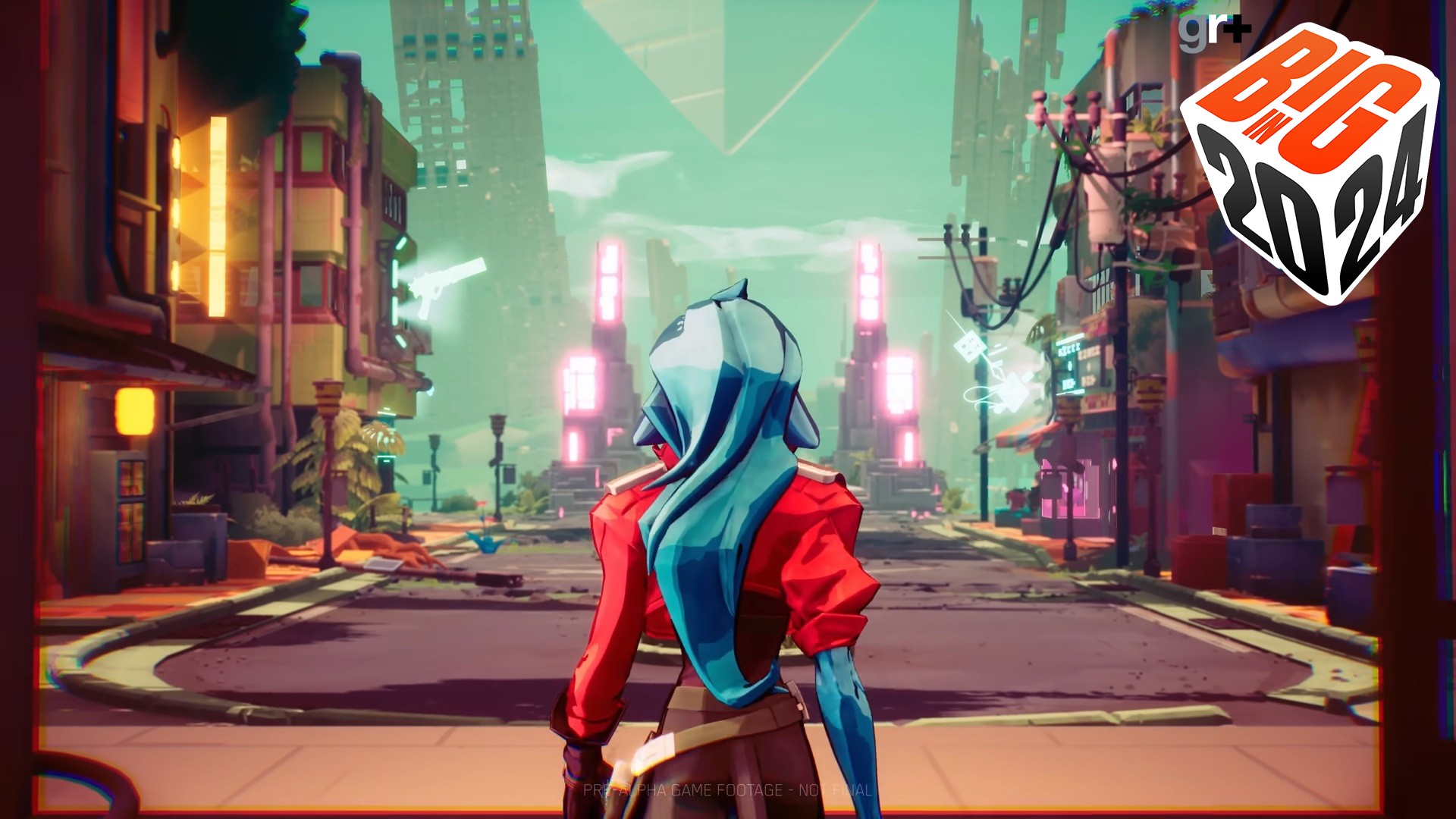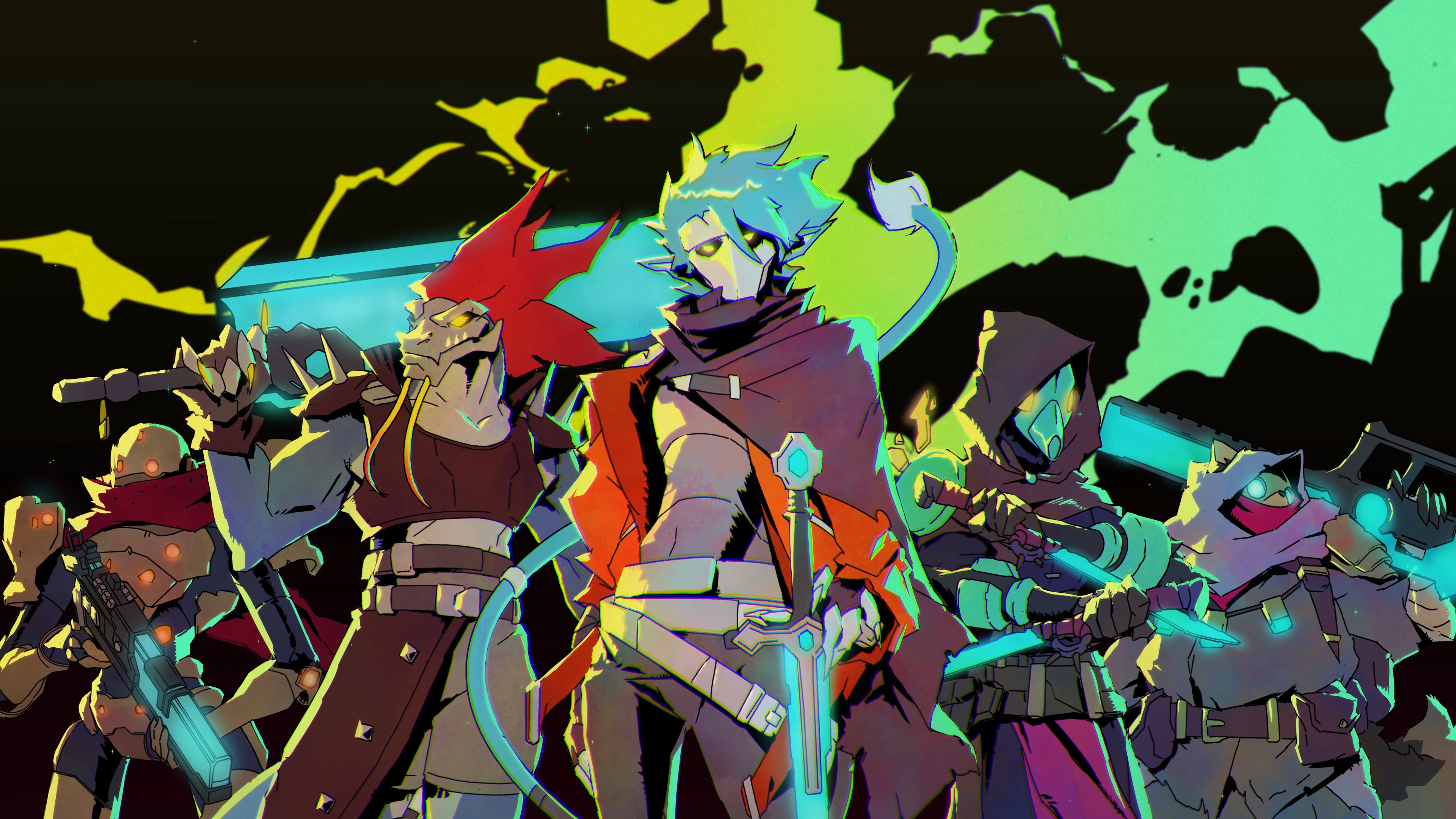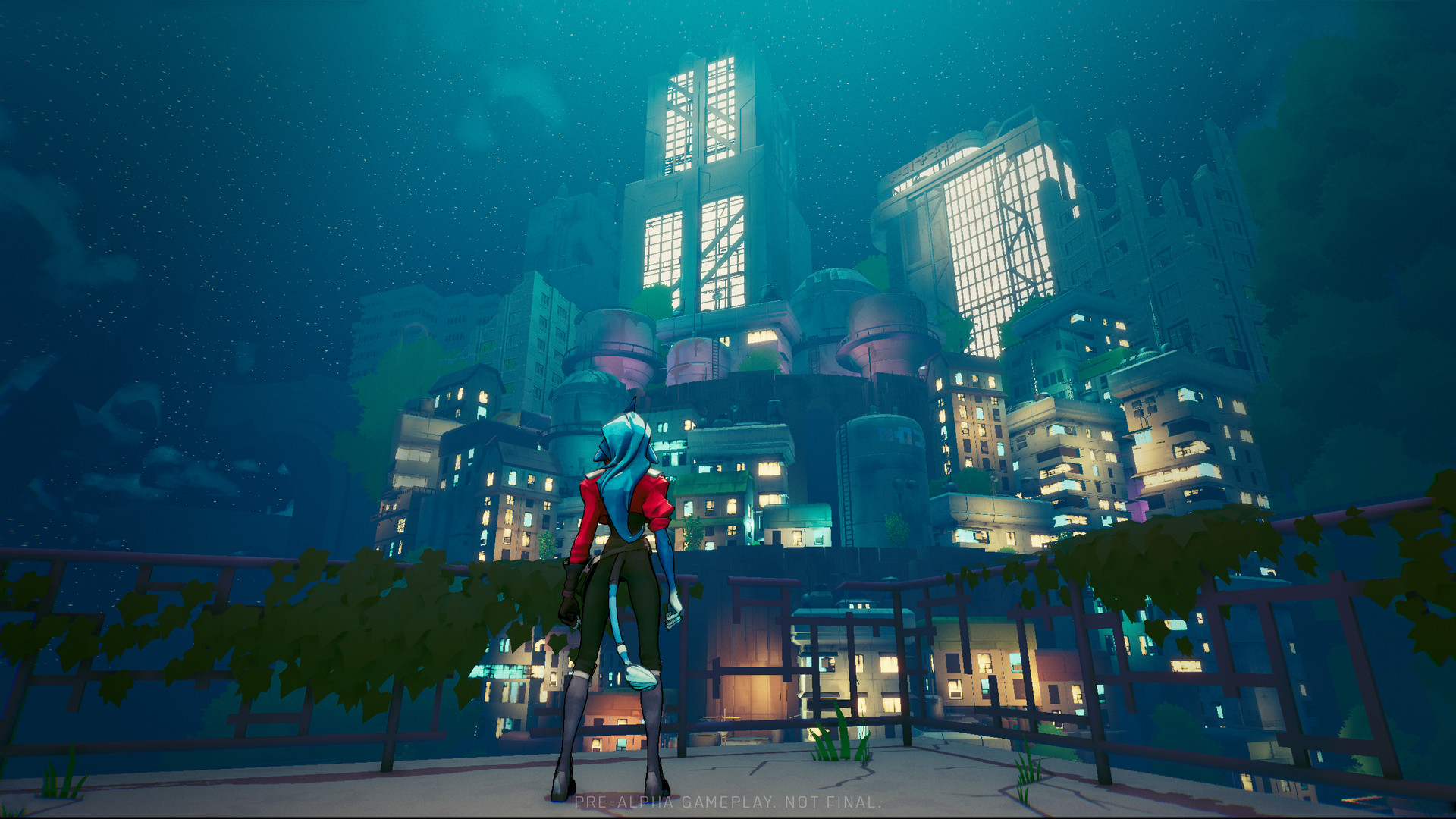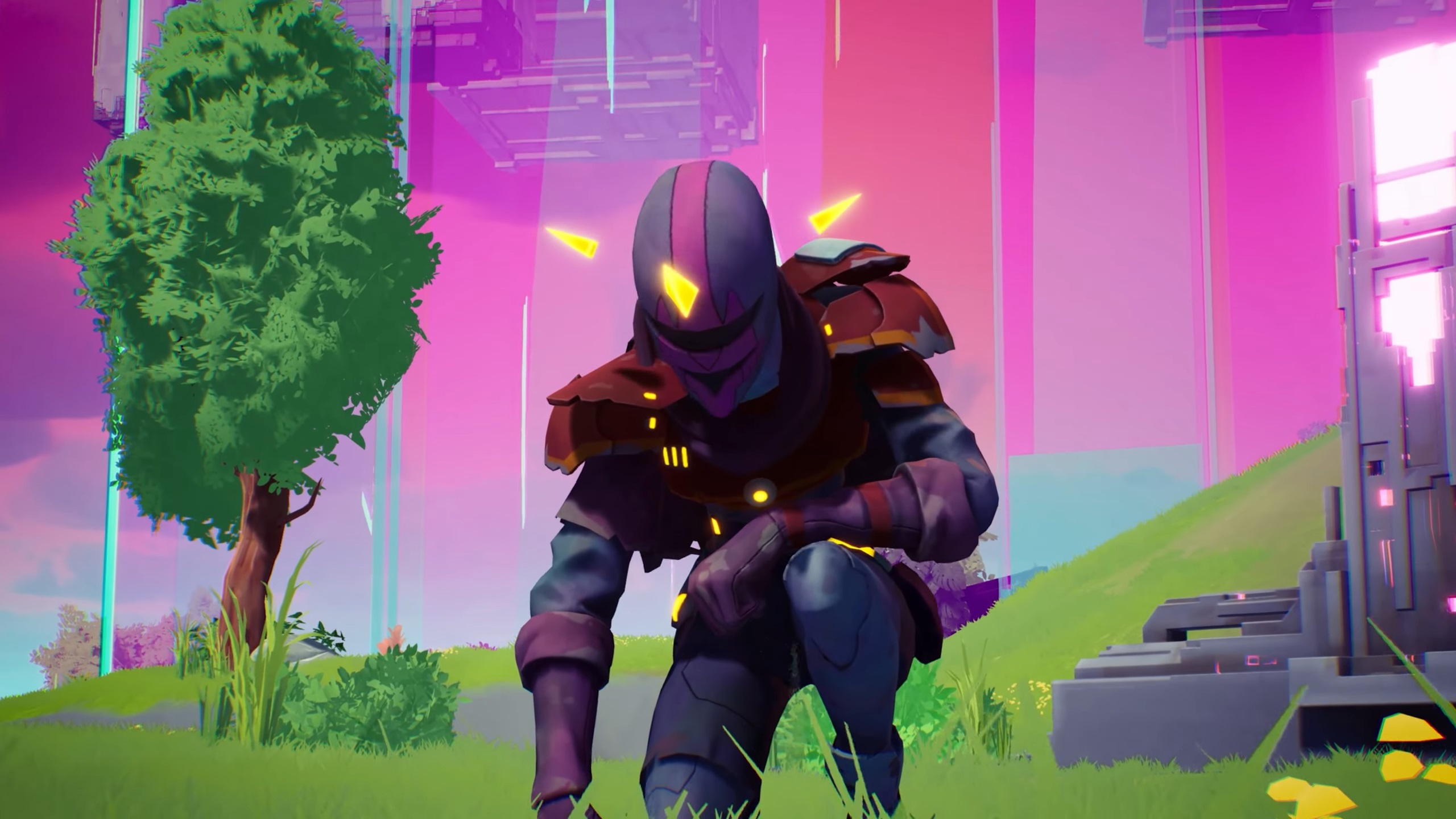
Can you turn anything into a roguelike? Should you? The genre is a proven recipe for replayability, so as AAA games like God of War Ragnarok and The Last of Us 2 catch up to the largely indie-incubated trend of procedurally generated, run-based games and modes, and as games like Ghostrunner 2 also embrace the Rogue within, these questions have been weighing on my mind. My heart says 'yes,' while my more cautious brain says 'honestly, maybe.'
Hyper Light Breaker, an upcoming 3D open-world roguelike from the makers of decidedly Rogue-unlike games Hyper Light Drifter and Solar Ash, could be one of the most interesting cases yet. It's a bold idea and a big change in direction for a small development team – Heart Machine, a studio that hasn't whiffed a single time – and it's been at the top of my 2024 wishlist practically since its reveal. It's matching even Hades 2 in my must-play hierarchy simply because I never know what to expect from this developer apart from fun. It's due this year and I'm ravenous to try it, but some question marks remain.
More than anything, Hyper Light Breaker has to overcome the inherent, almost oxymoronic challenge of an open-world roguelike. The best open-world games are generally revered for dense details that enable memorable and organic encounters and anecdotes, while the best roguelikes thrive on chop-and-change journeys where you're constantly looking forward and not getting too attached to your surroundings. How do you do both? How does open-world navigation work within the roguelike formula? How does Hyper Light Breaker build on the dev's previous games? I spoke to Heart Machine founder and creative director Alx Preston to find out.
Opposites attract

"We have a lot of grounding elements that appear in every world you see that are tied to all the visual storytelling and world-building we do, that we might do in any future parts of the Hyper Light world," Preston says of how Heart Machine brings consistency to chaos. "There's a lot of visual flair and key elements that we will enforce no matter what format it's in that will continue those threads.
"[Procedural generation] keeps movement and combat interesting, unique, and fresh. It definitely pushes us to make some alternative considerations than we would make in a different structure. We have different limitations than we would have otherwise, but they're not better or worse. They're just new constraints that we work with and around. It helps us gain new perspectives and do fun things we wouldn't otherwise."
Part of Hyper Light Breaker's problem solving will be done in Early Access with input from players. The game's Early Access journey will start in 2024, and through it, Preston says "we hope to learn how to keep making it more fun, find balance with so many combinations, and understand what qualities of this new format the audience will attach to that we couldn't predict."

"New format" really is the phrase here. I've played roguelikes with big worlds, but never one that's presented quite like Hyper Light Breaker. It's a 3D action game that's big on combat, where fights are connected by silky-smooth movement systems a la Solar Ash, and all with a big chunk of the story percolating in the background as your hub settlement expands and new characters move in. As you tackle the biomes and bosses of the Overgrowth, the tools and weapons available to you slowly but surely increase. This leads me to one big question: in terms of progression, what kind of roguelike are we dealing with here?
"You're always gaining and losing in any good roguelike or run-based game," Preston says, going on to outline Breaker's approach. "Two steps forward, one step back, sometimes multiple steps forward and back. It's that push and pull dynamic. It's aspiring to the ideal of some quality build that you've never gotten before, and the way that you unlock parts of the build over time. When you start out you don't have access to particular pieces you earn later. There's a consistency that you get later down the line that you weren't able to achieve early on. The idea is that you're gaining more control over or harnessing the RNG of these types of games, and building skills. That's what really keeps it compelling and not just pure chaos."
The heart of Heart Machine

With Solar Ash still fresh in my mind, and Hyper Light Drifter a more distant but equally fond memory, I'm also curious how Heart Machine is balancing Breaker's modes of play against the studio's proven strengths. "We're big on movement, generally speaking, when we design our games," Preston explains. "We like speed and flow. There's always a particular perspective you have to take every game. With [Solar Ash], there's a lot of movement and traversal because it's a 3D platformer. Breaker is not a 3D platformer. It's a combat-focused game. Those traversal elements are largely secondary and supplementary, but with Breaker, we have a larger world than Solar so we want to make sure we respect that. We don't want it to be boring when you're traversing the world between combat."
"Maybe we could make a racing game – who knows!"
Alx Preston
Breaker does have one big thing in common with Solar Ash: it's a new type of gameplay loop for Heart Machine. Through its narrative as well as its name, Hyper Light Breaker also roughs out a future for the Hyper Light IP at the core of Heart Machine. Preston has previously floated the idea of making more games in the same universe, but just as the studio's movement ethos remains constant, he reckons that action is unavoidably part of the studio's blood.
"I think the core principle is just 'design fun games that we're passionate about,'" he says. "There's an array of people with different experiences in the studio; we all have Venn diagrams that cross over in various places. Ultimately we're all drawn to more intense action-based games. We're probably not gonna make a tactical RTS down the line because it's not in our wheelhouse or DNA. But maybe we could make a racing game - who knows!
"It depends on where the projects lead us, and what we take out of those projects, what things we become proficient at, and what things we dislike. We're guided a lot by what's going to keep us creatively engaged more than anything else. This can take the shape of a lot of different genres, but ultimately it'll be more action-based."
For more previews of the biggest games of the year, check out our Big in 2024 series.





!["[T]he First and Fifth Amendments Require ICE to Provide Information About the Whereabouts of a Detained Person"](https://images.inkl.com/s3/publisher/cover/212/reason-cover.png?w=600)

